Scoliosis, a condition characterized by an abnormal curvature of the spine, affects millions of people worldwideity can lead to various health issues, including chronic pain, reduced mobility, and impaired organ function.
In recent years, yoga has gained popularity as a holistic approach to managing scoliosis and promoting spinal health.
In this article, we will delve deeper the benefits of yoga for scoliosis and how it can transform spinal alignment and alleviate discomfort. You can try some safe yoga pose with us.
Unveiling the Hidden Benefits of Yoga for Scoliosis and Spinal Alignment
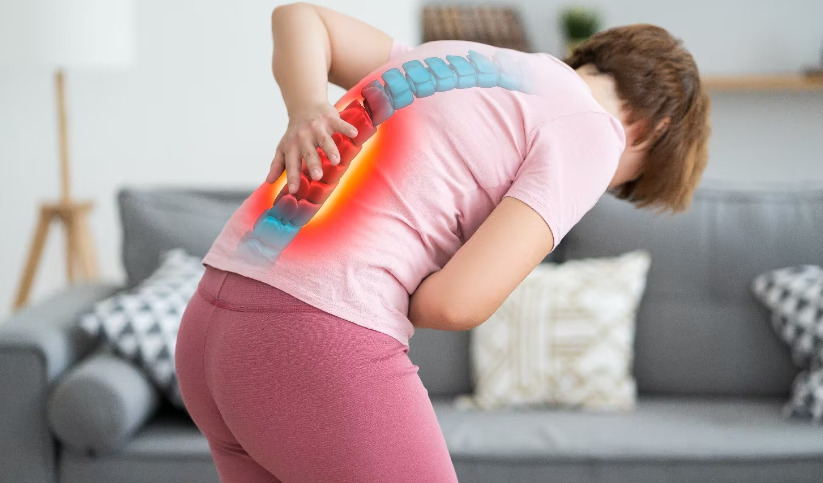
Scoliosis can develop during childhood, adolescence, or adulthood and may progress over time, causing the spine to curve in an S or C shape.
The significance of spinal health cannot be understated, as the spine is responsible for providing support, mobility, and protection to the body.
Maintaining spinal health is crucial for overall well-being, as it can prevent or minimize complications associated with scoliosis, such as chronic pain, breathing difficulties, and limitations in daily activities.
Different types of scoliosis and common spinal alignment issues
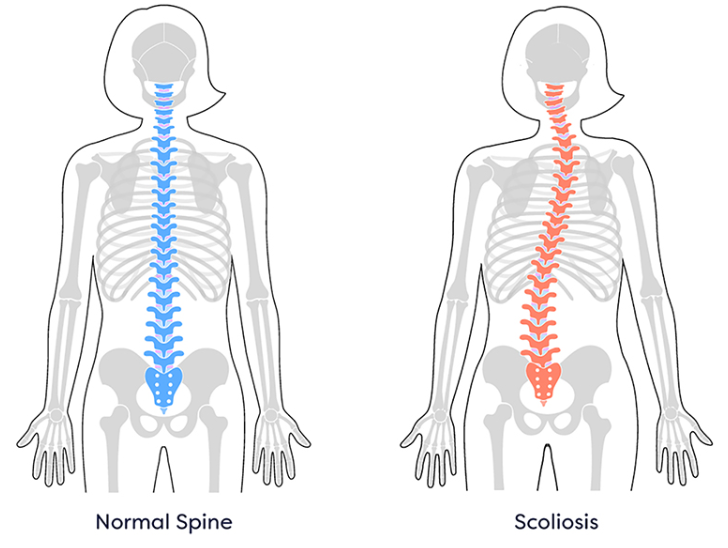
Scoliosis is a medical condition characterized by an abnormal curvature of the spine, typically presenting in one of three forms: idiopathic, congenital, or neuromuscular.
Idiopathic scoliosis is the most prevalent type, accounting for approximately 80% of cases. It is typically diagnosed during adolescence and tends to affect girls more than boys. The exact cause remains unknown, but there is evidence to suggest that genetic factors may play a role.
Congenital scoliosis occurs when the spine develops incorrectly in the womb, leading to vertebrae malformations. This type of scoliosis is typically detected at birth or during early childhood, and its severity can vary greatly.
Neuromuscular scoliosis is caused by a variety of neurological or muscular disorders, such as cerebral palsy, muscular dystrophy, or spinal cord injuries. These conditions can impact the development and function of the muscles supporting the spine, leading to abnormal curvature.
Spinal alignment issues often accompany scoliosis.
Common spinal alignment issues associated with scoliosis include kyphosis (an exaggerated forward rounding of the upper back) and lordosis (an exaggerated inward curve of the lower back), both of which can lead to poor posture and pain.
Causes, potential complications, and treatment options for scoliosis
The causes of scoliosis vary depending on the type, though genetics are believed to play a role in idiopathic scoliosis.
Potential complications of scoliosis can range from mild discomfort to severe physical limitations. In severe cases, the curvature may interfere with lung function, causing respiratory issues or even heart problems.
Treatment options for scoliosis depend on the severity and progression of the curve. Mild cases may simply require monitoring and regular check-ups, while more pronounced curves could necessitate the use of a brace to help slow or halt the progression.
In extreme cases, spinal fusion surgery may be recommended to correct the curvature and alleviate pain.
So, how yoga can transform spinal alignment and alleviate the discomfort?
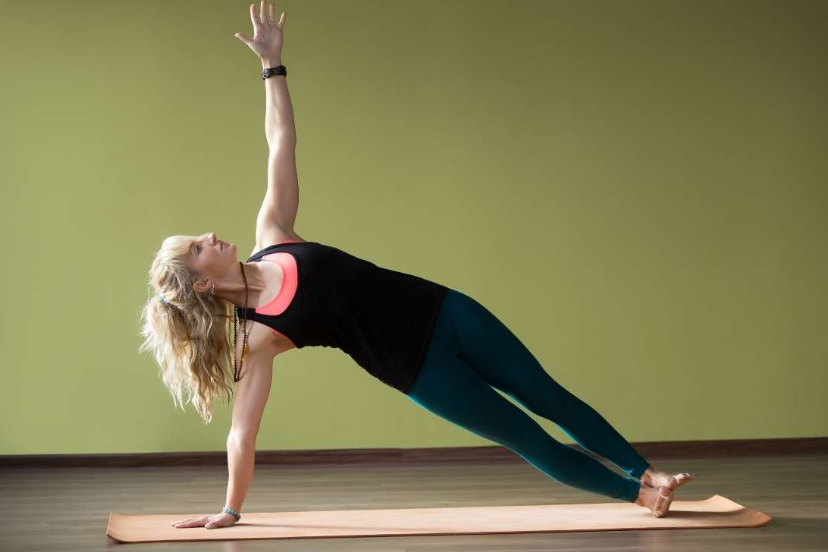
By incorporating specific yoga poses and techniques tailored to the unique needs of those with scoliosis, individuals can improve spinal alignment, increase flexibility, and strengthen the muscles that support the spine. This, in turn, can help to alleviate discomfort and pain often associated with scoliosis.
Yoga also helps in reducing stress and promoting relaxation, which can be particularly beneficial for individuals with scoliosis, who often experience increased muscle tension and discomfort. Regular yoga practice can also improve posture, balance, and body awareness, further contributing to better spinal health.
Practicing yoga for scoliosis offers numerous advantages, including:
- Improved spinal alignment: Specific yoga poses and techniques can help to counteract the curvature of the spine, leading to improved alignment and reduced discomfort.
- Increased muscle strength and flexibility: Yoga practice can help to strengthen the muscles that support the spine and increase flexibility in the surrounding muscles and connective tissues. This can contribute to better spinal stability and reduced pain.
- Enhanced body awareness: Yoga encourages mindfulness and body awareness, allowing individuals with scoliosis to become more in tune with their bodies and better understand their unique curvature.
- Stress reduction and relaxation: The deep breathing and meditation aspects of yoga can help to reduce stress, promote relaxation, and alleviate muscle tension often associated with scoliosis.
- Non-invasive and accessible: Unlike some other treatment options for scoliosis, yoga is non-invasive and can be adapted to suit the needs and abilities of individuals with varying degrees of spinal curvature.
- Community and support: Practicing yoga for scoliosis can help individuals connect with others who share similar experiences and fostering a sense of community and support.
In conclusion, yoga offers a holistic approach to managing scoliosis and promoting spinal health. By understanding the unique needs of individuals with scoliosis and incorporating specific yoga techniques, individuals can experience improved spinal alignment, reduced discomfort, and a myriad of other benefits. Yoga serves as a powerful tool for transforming spinal health and enhancing overall well-being for those with scoliosis.
The Essence of Balance: Yoga Techniques for Scoliosis and Spinal Alignment
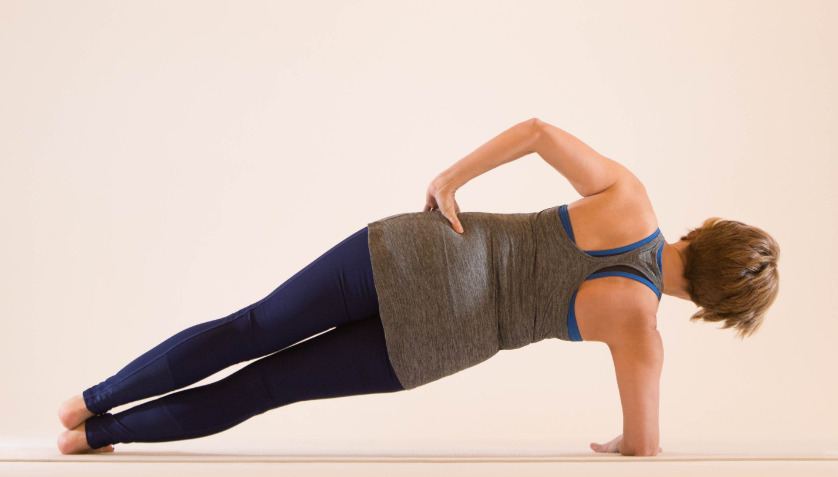
Conscious breathing, or pranayama, plays a crucial role in maintaining spinal health. Deep, mindful breaths help increase oxygen flow to the muscles and tissues surrounding the spine, promoting relaxation and reducing tension.
This increased oxygen flow aids in the healing process and improves overall spinal health. Additionally, conscious breathing helps create body awareness, enabling individuals to better understand their unique alignment and adjust their yoga practice accordingly.
Adapting poses for your body’s unique needs
Each individual has a unique spinal curvature and body structure. Asymmetrical practice focuses on adapting yoga poses to accommodate these differences, promoting proper alignment and preventing injury. By modifying poses and incorporating props, such as blocks or straps, individuals can adjust their practice to suit their specific needs, targeting areas of imbalance and improving overall spinal health.
Improving spinal alignment through muscle balance
A balanced yoga practice incorporates both strengthening and stretching exercises, helping to create muscular balance and improve spinal alignment. Strengthening poses help build the muscles necessary to support the spine, while stretching poses increase flexibility and range of motion. This balanced approach helps prevent injury and promotes overall spinal health.
Embodying Alignment: Yoga Poses and Sequences for Scoliosis and Spinal Health
Yoga poses and sequences tailored to individuals with scoliosis can be highly beneficial for spinal health. Certain poses target areas of the body that may be more prone to misalignment:
1. Warm-up poses
Cat/Cow pose:
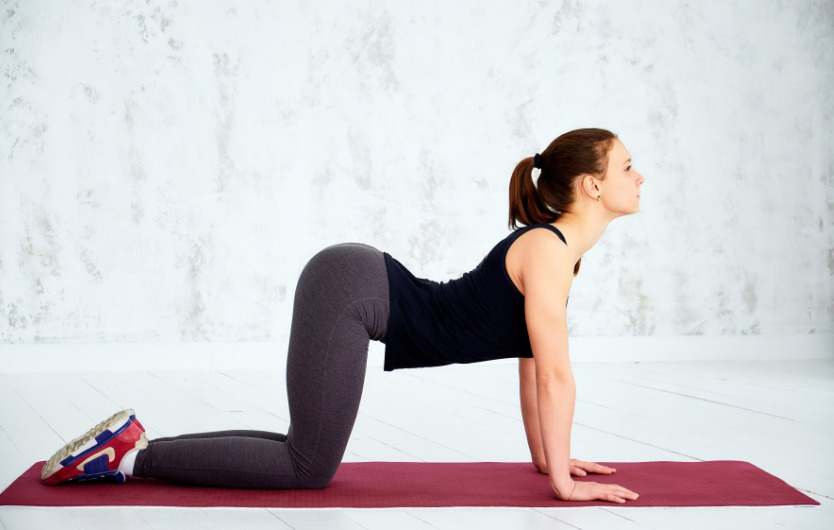
This dynamic pose helps to warm up the spine and increase flexibility. Begin on your hands and knees, with your wrists beneath your shoulders and your knees beneath your hips.
Inhale, arching your back and lifting your chest and tailbone towards the sky (Cow pose).
Exhale, rounding your spine and tucking your tailbone under, drawing your chin towards your chest (Cat pose). Repeat for several breaths.
Be cautious not to overextend the spine and keep your movements controlled and fluid.
Mountain pose:
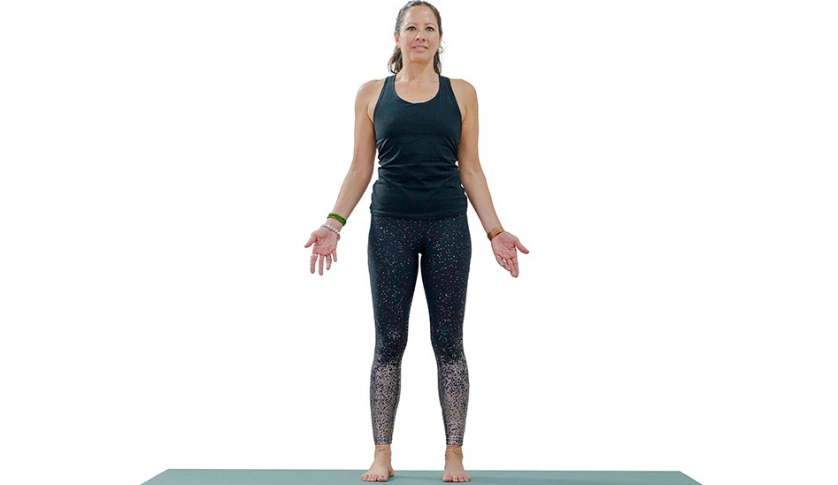
Stand tall with your feet hip-width apart, grounding down through your feet and lifting the crown of your head towards the sky. Engage your core and lengthen your spine.
This pose helps establish proper posture and body awareness. Be cautious not to lock your knees or hyperextend your lower back.
Downward-Facing Dog:
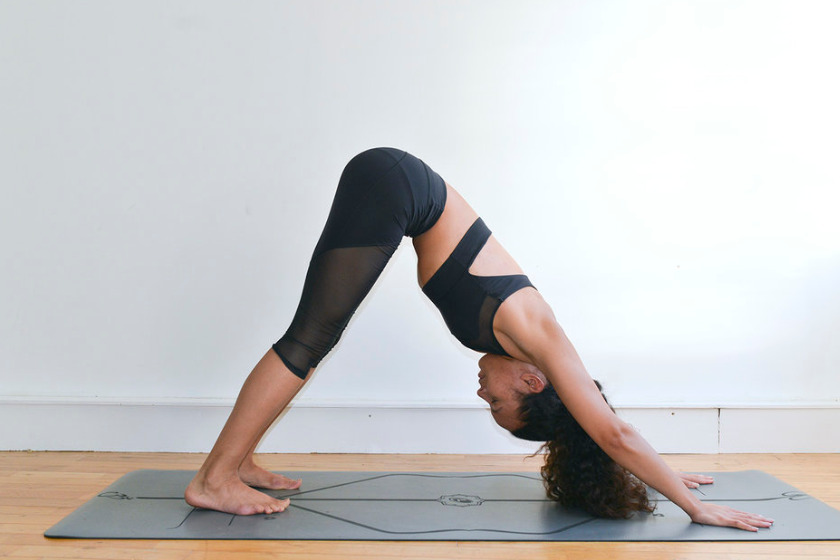
Start on your hands and knees, tuck your toes under, and lift your hips towards the sky, creating an inverted “V” shape with your body.
This pose stretches the spine, hamstrings, and calves. Be cautious not to overextend the spine or put too much pressure on the wrists.
2. Strengthening poses
Side Plank:
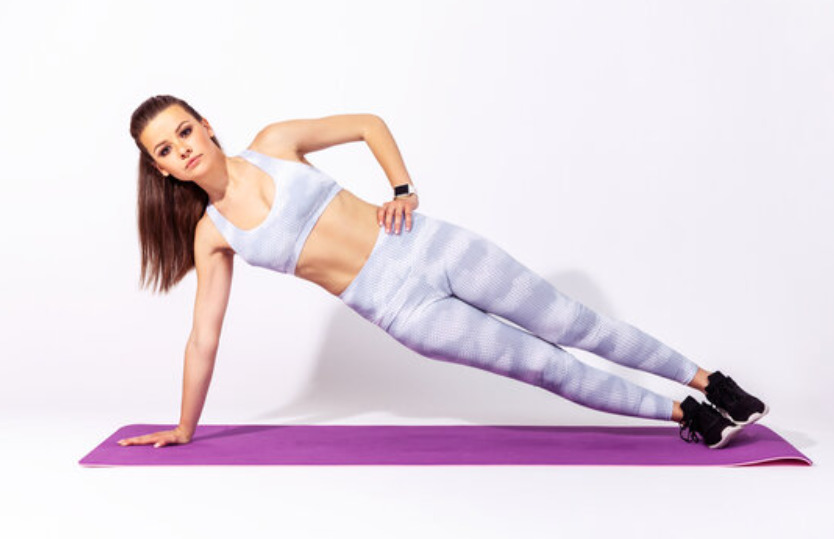
Begin in a plank position, then shift your weight onto your right hand and the outer edge of your right foot, stacking your left foot on top of your right. Engage your core and lift your left arm towards the sky.
This pose strengthens the obliques and promotes spinal stability.
Be cautious of wrist and shoulder strain; modify by lowering your bottom knee to the ground if needed.
Plank:
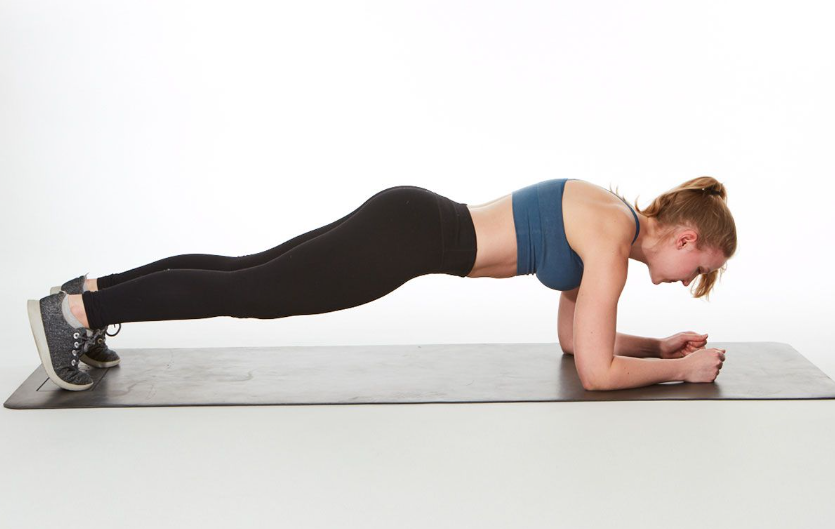
Start on your hands and knees, then step your feet back, creating a straight line from your head to your heels. Engage your core and hold for several breaths.
This pose strengthens the arms, shoulders, and core, providing support for the spine.
Be cautious not to let your hips sag or lift too high, and modify by lowering to your knees if necessary.
Bird-Dog:
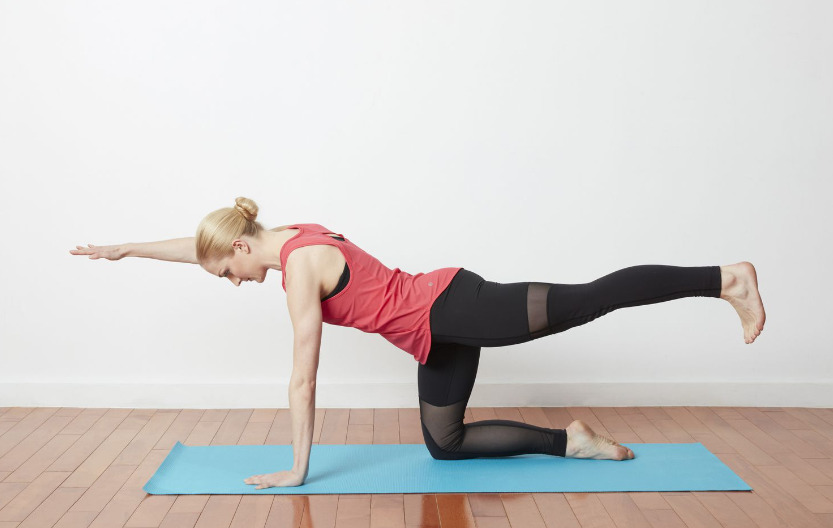
Begin on your hands and knees, with your wrists beneath your shoulders and your knees beneath your hips. Extend your right arm forward and your left leg back, maintaining a straight line from your fingertips to your toes. Engage your core and hold for several breaths, then switch sides.
This pose strengthens the back and core muscles, promoting spinal stability. Be cautious not to arch your lower back or let your hips shift out of alignment.
3. Stretching poses
Triangle pose:
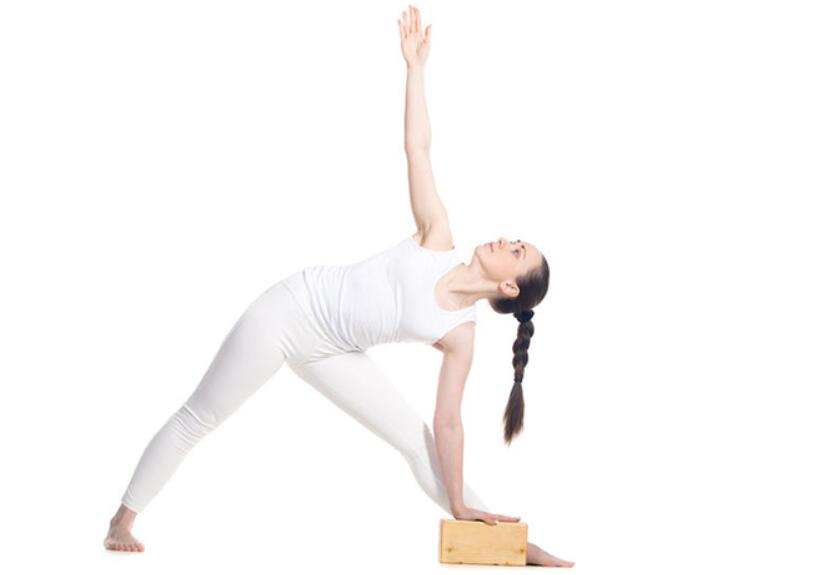
Stand with your feet wide apart, turning your right foot out 90 degrees and your left foot in slightly. Extend your arms out to the sides, then reach your right hand towards your right ankle or shin, lifting your left arm towards the sky.
This pose stretches the spine, hips, and hamstrings. Be cautious not to put too much pressure on your lower back and maintain proper alignment throughout the pose.
Extended Side Angle pose:
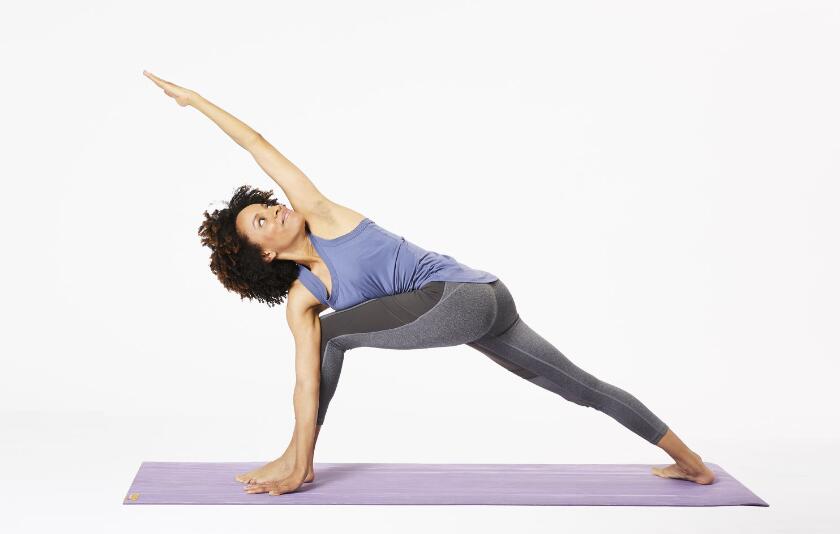
From Triangle pose, bend your right knee, placing your right forearm on your right thigh or your right hand on the ground outside your right foot. Extend your left arm overhead, creating a straight line from your left fingertips to your left foot.
This pose stretches the spine, hips, and side body. Be cautious not to collapse into your right shoulder and maintain proper alignment throughout the pose.
Child’s pose:
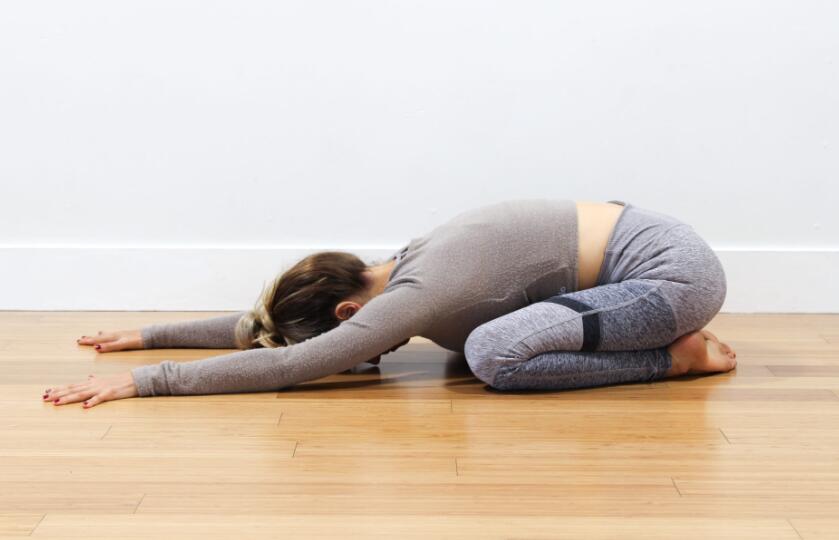
Begin on your hands and knees, then sit back onto your heels, resting your forehead on the ground and extending your arms forward or alongside your body.
This gentle pose stretches the spine, hips, and shoulders. Be cautious not to force your hips down if you feel discomfort and use a blanket or bolster for support if needed.
4. Balancing poses
Tree pose:
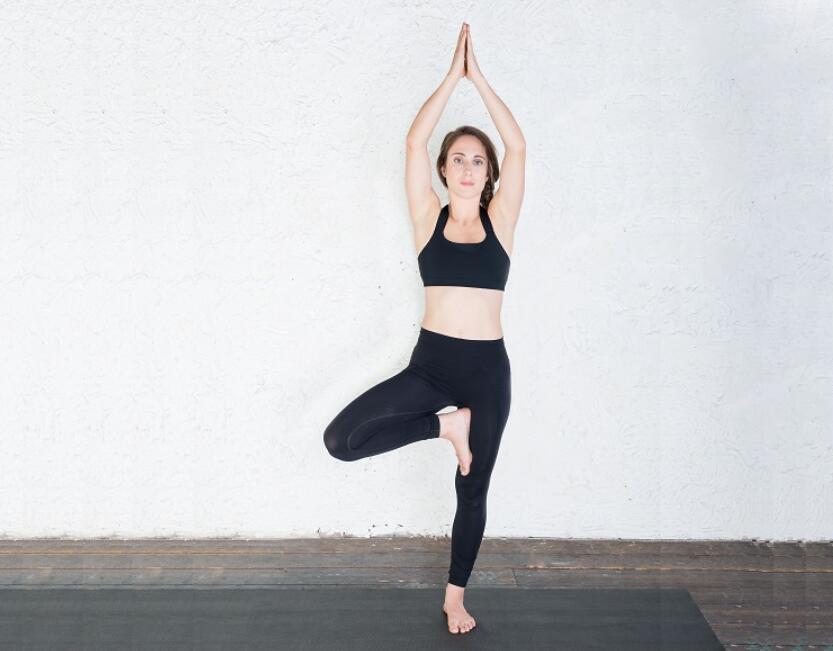
Stand tall with your feet hip-width apart, then shift your weight onto your left foot and place your right foot on your inner left ankle, calf, or thigh (avoid placing your foot on your knee). Bring your palms together at your heart center and focus on a steady point ahead.
This pose challenges balance and strengthens the leg and core muscles. Be cautious not to lean into your standing leg and maintain proper alignment throughout the pose.
Half Moon pose:
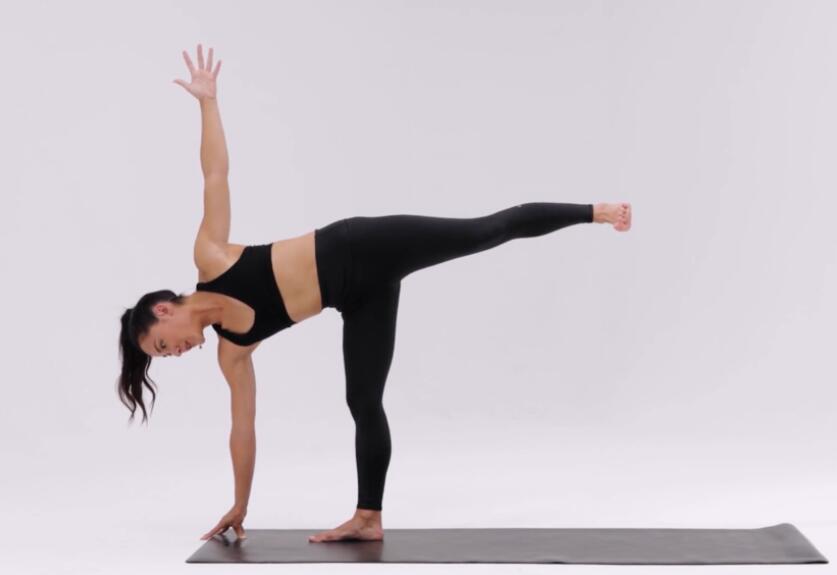
From the Triangle pose, bend your right knee and place your right hand on the ground or a block, about a foot in front of your right foot. Lift your left leg parallel to the ground, flexing your foot and extending your left arm towards the sky.
This pose challenges to balance and stretches the spine, hips, and hamstrings. Be cautious not to collapse into your right shoulder and maintain proper alignment throughout the pose.
Related post: Breathe Beyond Limits: Advanced Yoga Breathing Techniques
5. Restorative poses and relaxation:
Legs-Up-The-Wall pose:
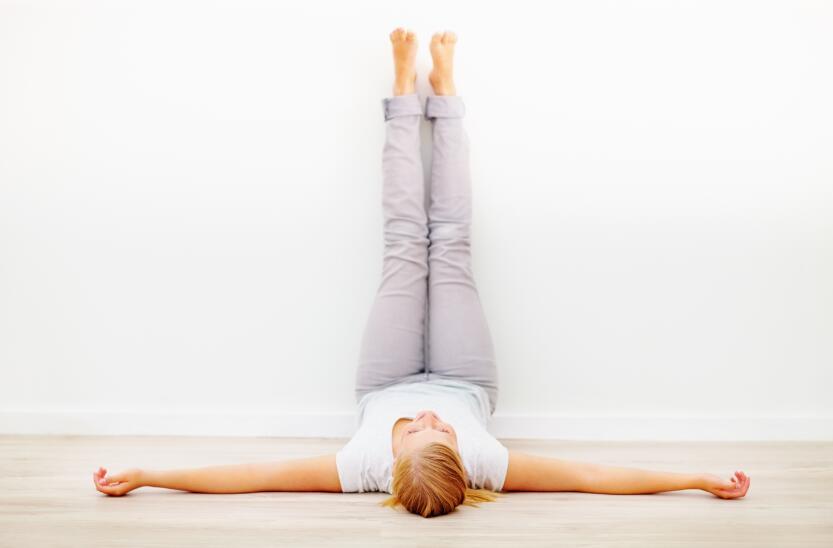
Lie on your back with your hips close to a wall, then extend your legs up the resting your heels against it. Allow your arms to rest alongside your body.
This gentle, restorative pose helps to release tension in the lower back and hips. Be cautious not to strain your neck and use a bolster or folded blanket for support if needed.
Savasana:
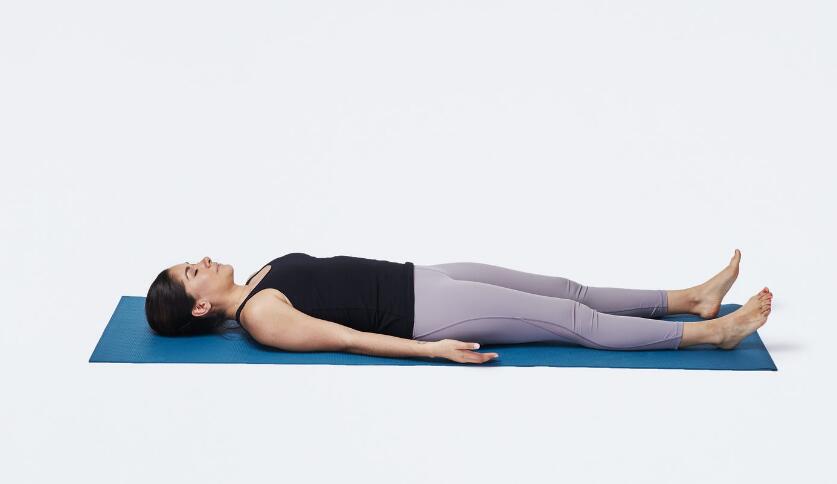
Lie on your back with your legs extended and your arms resting alongside your body, palms facing up. Close your eyes and allow yourself to fully relax, releasing any tension or stress.
This pose allows the body to absorb the benefits of your practice and promotes deep relaxation. Be cautious not to let your mind wander; focus on your breath and maintain a sense of presence.
6. Additional poses for scoliosis and spinal alignment
Cobra pose:
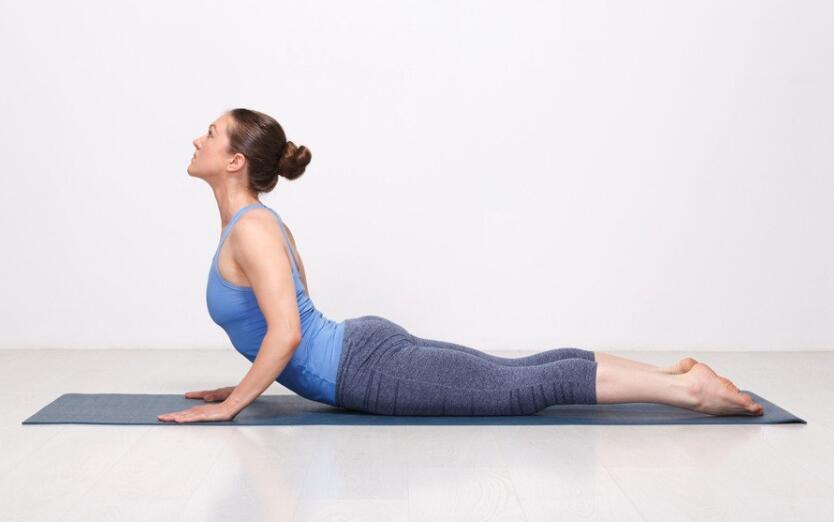
Lie on your stomach with your hands beneath your shoulders, then gently lift your chest off the ground, engaging your back muscles.
This pose strengthens the back muscles and promotes spinal flexibility. Be cautious not to strain your neck or lower back; keep your movements gentle and controlled.
Bridge pose:
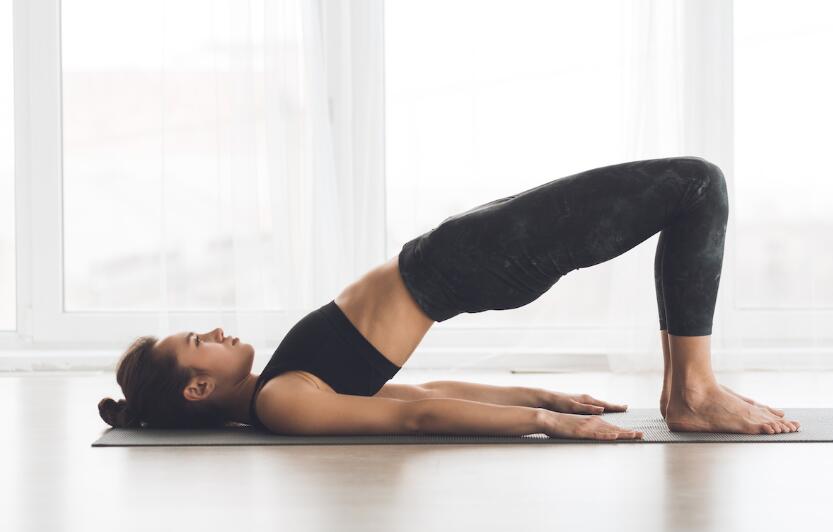
Lie on your back with your knees bent and your feet hip-width apart, then lift your hips towards the sky, engaging your glutes and hamstrings. This pose strengthens the back and leg muscles and promotes spinal alignment.
Be cautious not to overextend your lower back; keep your movements controlled and engage your core for support. stretches the entire back body, including the spine, hamstrings, and calves.
It also helps to calm the mind and reduce stress. Be cautious not to force the stretch and use props, such as a strap or blanket, if needed to support your body.
Nurturing Your Spine: Tips for a Safe and Effective Yoga Practice for Scoliosis
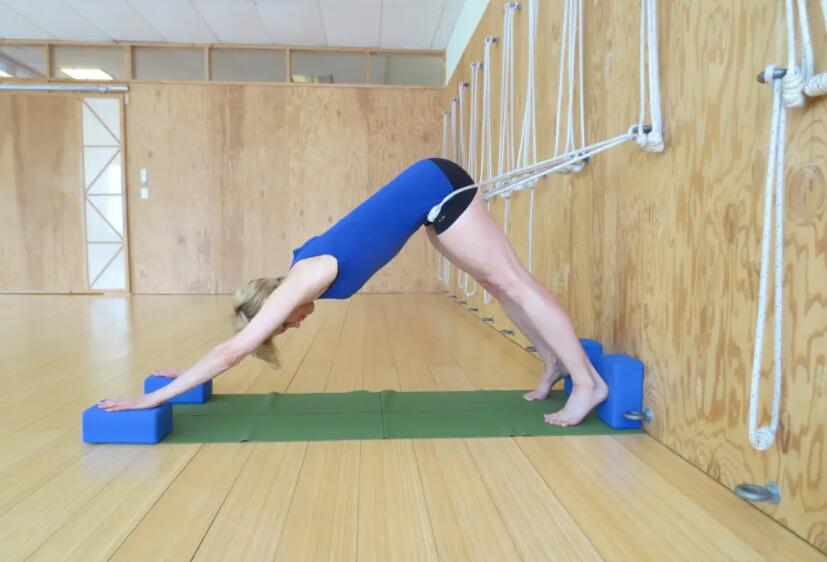
Like we’ve talked above, yoga can be a valuable tool for individuals with scoliosis to manage their condition and promote spinal health. However, it is important to approach the practice with caution and mindfulness.
By listening to your body, maintaining proper alignment, and incorporating complementary therapies, you can create a safe and effective yoga practice that supports your unique needs.
Listening to your body and maintaining proper alignment
Listening to your body and maintaining proper alignment: When practicing yoga with scoliosis, it is important to pay close attention to your body and any sensations or discomfort you may experience.
This can help you avoid overexertion or injury and modify poses as needed to accommodate your unique spinal curvature. Additionally, maintaining proper alignment is crucial for promoting spinal health and preventing further curvature. This may involve using props, such as blocks or straps, to support your body and achieve proper alignment in poses.
Consistency and progress tracking
Consistency and progress tracking: The keys to success: Consistency is key when practicing yoga for scoliosis. Regular practice can help build strength, increase flexibility, and promote overall spinal health. Additionally, tracking your progress can help you identify areas of improvement and celebrate your successes.
This may involve keeping a journal of your practice, taking photos to document progress, or working with a qualified yoga instructor who can provide guidance and support.
Combining yoga with complementary therapies
Combining yoga with complementary therapies for scoliosis management: Yoga can be a valuable addition to a comprehensive scoliosis management plan, which may also include physical therapy, chiropractic care, or other complementary therapies.
These therapies can help address specific areas of concern and provide a holistic approach to managing scoliosis. For example, physical therapy can help build strength and flexibility in targeted areas, while chiropractic care can help improve spinal alignment and reduce pain.
Related post: Chair Yoga for Seniors: A Comprehensive Guide to Health and Well-being
Conclusion:
In conclusion, yoga can be a valuable tool for individuals with scoliosis to manage their condition and promote spinal health. By practicing with caution and mindfulness, listening to your body, maintaining proper alignment, and incorporating complementary therapies, you can create a safe and effective yoga practice that supports your unique needs.
